Ford Puma vs MINI Aceman – Differences & prices compared
Costs and Efficiency:
Price and efficiency are often the first things buyers look at. Here it becomes clear which model has the long-term edge – whether at the pump, the plug, or in purchase price.
Ford Puma has a hardly perceptible advantage in terms of price – it starts at 24800 £, while the MINI Aceman costs 25500 £. That’s a price difference of around 686 £.
In terms of energy consumption, the advantage goes to the Ford Puma: with 13.10 kWh per 100 km, it’s hardly perceptible more efficient than the MINI Aceman with 14 kWh. That’s a difference of about 0.90 kWh.
As for range, the MINI Aceman performs hardly perceptible better – achieving up to 405 km, about 29 km more than the Ford Puma.
Engine and Performance:
Power, torque and acceleration say a lot about how a car feels on the road. This is where you see which model delivers more driving dynamics.
When it comes to engine power, the MINI Aceman has a clearly perceptible edge – offering 258 HP compared to 168 HP. That’s roughly 90 HP more horsepower.
In acceleration from 0 to 100 km/h, the MINI Aceman is somewhat quicker – completing the sprint in 6.40 s, while the Ford Puma takes 7.40 s. That’s about 1 s faster.
In terms of top speed, the Ford Puma performs hardly perceptible better – reaching 210 km/h, while the MINI Aceman tops out at 200 km/h. The difference is around 10 km/h.
There’s also a difference in torque: MINI Aceman pulls slightly stronger with 350 Nm compared to 290 Nm. That’s about 60 Nm difference.
Space and Everyday Use:
Whether family car or daily driver – which one offers more room, flexibility and comfort?
Both vehicles offer seating for 5 people.
In curb weight, Ford Puma is noticeable lighter – 1316 kg compared to 1720 kg. The difference is around 404 kg.
In terms of boot space, the Ford Puma offers decisively more room – 523 L compared to 300 L. That’s a difference of about 223 L.
In maximum load capacity, the Ford Puma performs distinct better – up to 1283 L, which is about 278 L more than the MINI Aceman.
When it comes to payload, MINI Aceman a bit takes the win – 530 kg compared to 469 kg. That’s a difference of about 61 kg.
Who comes out on top?
Overall, the MINI Aceman shows itself to be wins by a narrow margin and secures the title of DriveDuel Champion.
It convinces with the more balanced overall package and proves to be the more versatile choice for everyday use.
Costs and Consumption
View detailed analysis
Engine and Performance
View detailed analysis
Dimensions and Body
View detailed analysis
 @ MINI / BMW Group Press
@ MINI / BMW Group Press
MINI Aceman
Ford Puma
The Ford Puma is a cheeky compact crossover that blends sporty styling with city-friendly practicality, giving drivers a surprisingly fun and composed ride. With clever storage tricks and a lively personality, it’s a smart pick for buyers who want enjoyment without fuss.
details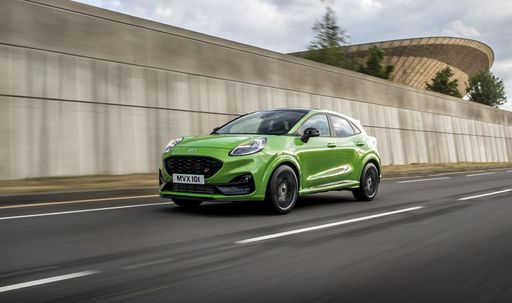 @ Ford Motor Company / Ford Media Center
@ Ford Motor Company / Ford Media Center
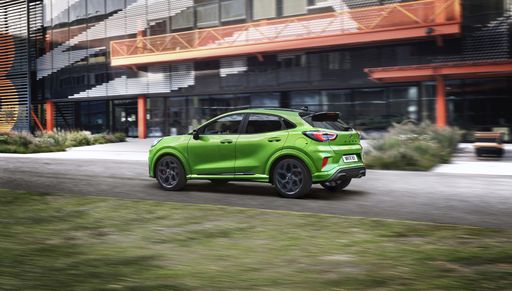 @ Ford Motor Company / Ford Media Center
@ Ford Motor Company / Ford Media Center
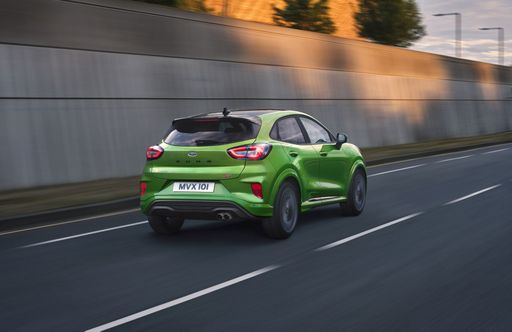 @ Ford Motor Company / Ford Media Center
@ Ford Motor Company / Ford Media Center
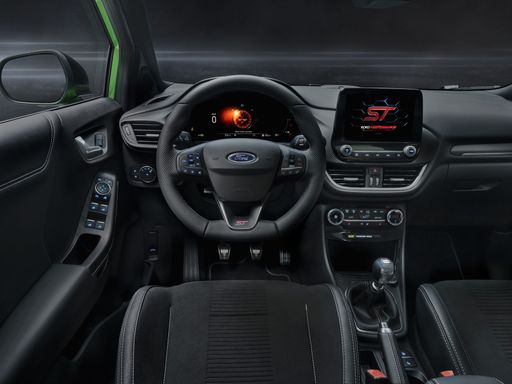 @ Ford Motor Company / Ford Media Center
@ Ford Motor Company / Ford Media Center
MINI Aceman
The MINI Aceman squeezes classic MINI charm into a sharper, more crossover-ready shape, trading some of the old curves for grown-up practicality while keeping the wink-and-grin personality buyers crave. Inside it's a surprisingly premium, customizable cabin that feels clever rather than cluttered, and on the road the Aceman is eager and nimble — ideal for city dwellers who want an SUV silhouette with proper fun behind the wheel.
details @ MINI / BMW Group Press
@ MINI / BMW Group Press
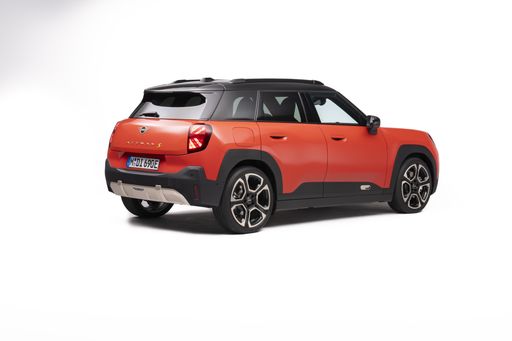 @ MINI / BMW Group Press
@ MINI / BMW Group Press
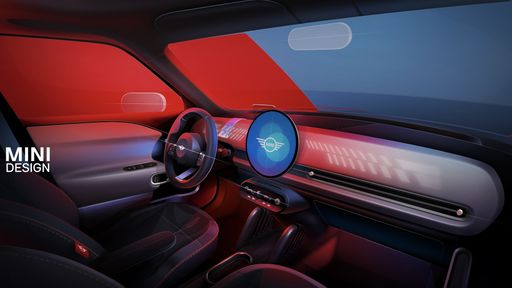 @ MINI / BMW Group Press
@ MINI / BMW Group Press
 @ Ford Motor Company / Ford Media Center
@ Ford Motor Company / Ford Media Center
|
 @ MINI / BMW Group Press
@ MINI / BMW Group Press
|
|
|
|
Costs and Consumption |
|
|---|---|
|
Price
24800 - 36300 £
|
Price
25500 - 36200 £
|
|
Consumption L/100km
5.4 - 5.9 L
|
Consumption L/100km
-
|
|
Consumption kWh/100km
13.1 - 13.9 kWh
|
Consumption kWh/100km
14 - 16 kWh
|
|
Electric Range
361 - 376 km
|
Electric Range
303 - 405 km
|
|
Battery Capacity
43 kWh
|
Battery Capacity
38.5 - 49.2 kWh
|
|
co2
0 - 135 g/km
|
co2
0 g/km
|
|
Fuel tank capacity
42 L
|
Fuel tank capacity
-
|
Dimensions and Body |
|
|---|---|
|
Body Type
SUV
|
Body Type
SUV
|
|
Seats
5
|
Seats
5
|
|
Doors
5
|
Doors
5
|
|
Curb weight
1316 - 1563 kg
|
Curb weight
1720 - 1825 kg
|
|
Trunk capacity
456 - 523 L
|
Trunk capacity
300 L
|
|
Length
4186 - 4226 mm
|
Length
4079 mm
|
|
Width
1805 mm
|
Width
1754 mm
|
|
Height
1550 - 1555 mm
|
Height
1514 mm
|
|
Max trunk capacity
1216 - 1283 L
|
Max trunk capacity
1005 L
|
|
Payload
367 - 469 kg
|
Payload
450 - 530 kg
|
Engine and Performance |
|
|---|---|
|
Engine Type
Electric, Petrol MHEV
|
Engine Type
Electric
|
|
Transmission
Automatic, Manuel
|
Transmission
Automatic
|
|
Transmission Detail
Reduction Gearbox, Manual Gearbox, Dual-Clutch Automatic
|
Transmission Detail
Reduction Gearbox
|
|
Drive Type
Front-Wheel Drive
|
Drive Type
Front-Wheel Drive
|
|
Power HP
125 - 168 HP
|
Power HP
184 - 258 HP
|
|
Acceleration 0-100km/h
7.4 - 9.8 s
|
Acceleration 0-100km/h
6.4 - 7.9 s
|
|
Max Speed
160 - 210 km/h
|
Max Speed
160 - 200 km/h
|
|
Torque
170 - 290 Nm
|
Torque
290 - 350 Nm
|
|
Number of Cylinders
3
|
Number of Cylinders
-
|
|
Power kW
92 - 124 kW
|
Power kW
135 - 190 kW
|
|
Engine capacity
999 cm3
|
Engine capacity
-
|
General |
|
|---|---|
|
Model Year
2025
|
Model Year
2024 - 2025
|
|
CO2 Efficiency Class
A, D
|
CO2 Efficiency Class
A
|
|
Brand
Ford
|
Brand
MINI
|
Is the Ford Puma offered with different drivetrains?
The Ford Puma is offered with Front-Wheel Drive.
The prices and data displayed are estimates based on German list prices and may vary by country. This information is not legally binding.
